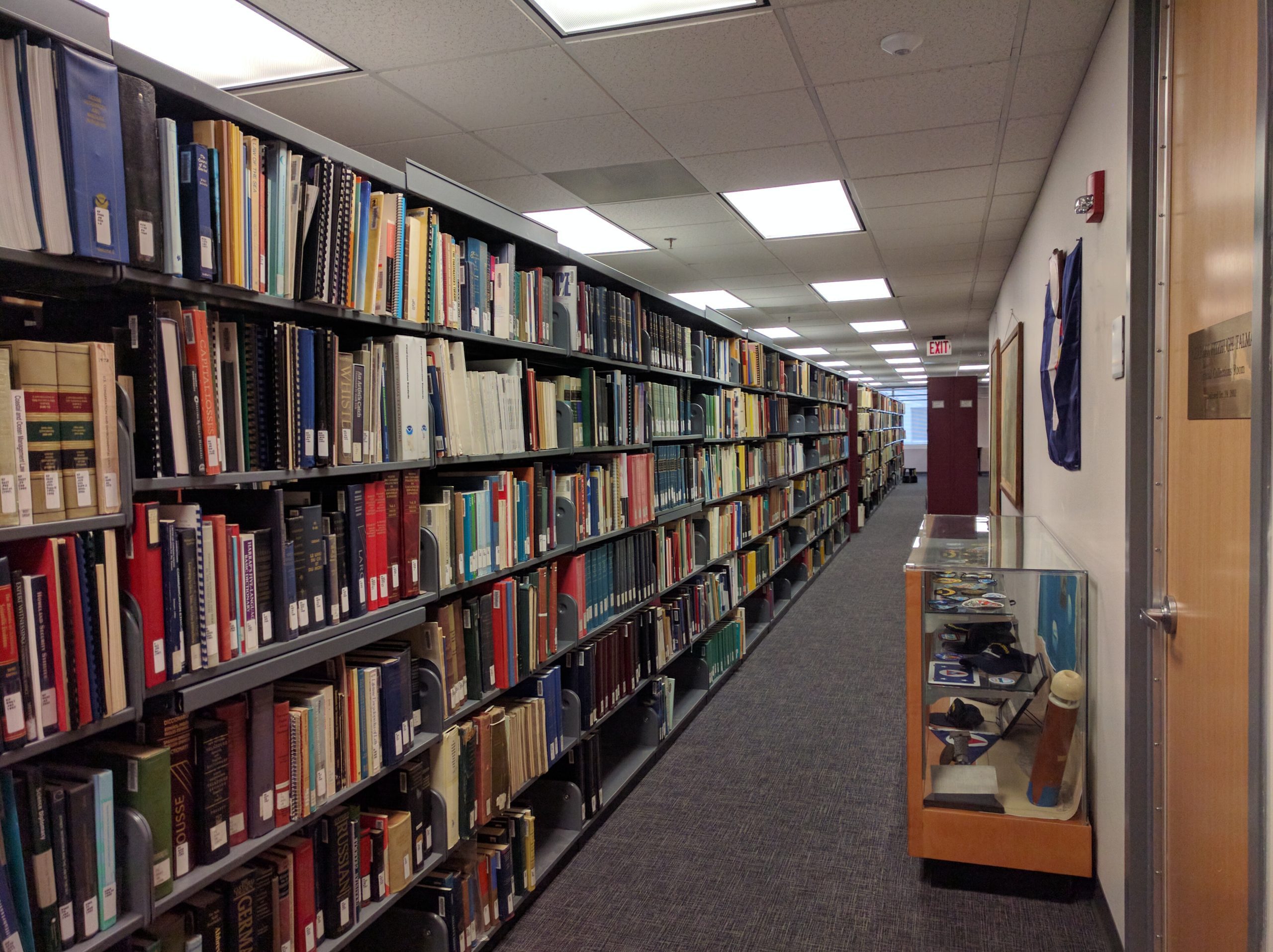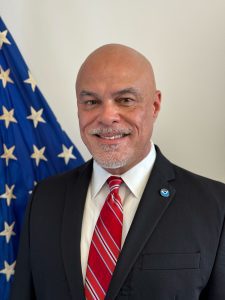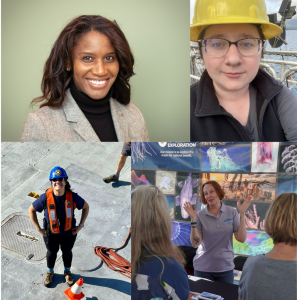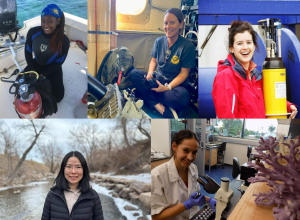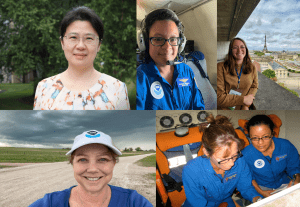Libraries are the backbone of any research organization, and the National Oceanic and Atmospheric Administration (NOAA) is no exception. With 21 libraries that service NOAA’s various labs, programs, and offices, organizing these veritable “oceans” of data is accomplished through the expertise of the NOAA Central Library staff. Scientists in their own right, these librarians provide crucial, behind-the-scenes services that contribute to the success of the organization’s research efforts.
Trevor Riley and Jennifer Fagan-Fry, two of the brilliant minds behind the NOAA Central Library, share an inside perspective into this complex system, their roles and interests, favorite parts of their jobs, and visions for the future of the library.
Jennifer Fagan-Fry is the Institutional Repository (IR) Manager of the Central Library. As the manager of the IR, her responsibilities include ensuring the organization’s compliance with federal publishing mandates, and overseeing scholarly communications with researchers and authors. Fagan-Fry says she loves learning about the wide range of research conducted at NOAA through her role at the library. She fondly recalls her early days of cataloging, and being captivated by the marine science and meteorological research she was organizing.
“I would just start reading things, and then think ‘Oh no, I’ve spent twenty minutes reading this and I should have been cataloging,’” she says with a laugh.
Fagan-Fry also recently started an informal NOAA publications group to share her ideas and love for the industry with fellow passionate publishers. But the most rewarding part of her job? Knowing that the work she does is helping to expand access to scientific research and knowledge not only for experts, but for everyday people who have curiosity and a passion for learning.
Trevor Riley has worked in the NOAA Central Library since 2017, and is currently the Head of Research/Public Services. Previously, he worked with the Coast Guard Academy as an instructional librarian, and as an engineering librarian at the College of Ceramics at Alfred University, doing research data management for federal grants. Now, Trevor brings his diversity of library experience to NOAA, where his duties include leading the Reference and Research Services teams, conducting in-depth research for clients, and interacting with scientists, policy experts, and members of NOAA leadership who need research assistance.
“One of the best parts about my job is that I get to learn about new things on a daily basis and that’s really important to me, you know, focusing on learning all the time,” Riley said.
He also enjoys breaking stereotypes about libraries and librarians. Since many people’s experience is limited to basic school or public library functions, the unique and complex services offered by the NOAA Central Library are often a pleasant surprise. “We get a lot of cool comments in terms of people being just really excited to know what we can do,” Riley said. He finds the knowledge that his work is appreciated and saves researchers time and money to be extremely motivating.
What is the difference between the Central Library and the Institutional Repository (IR)?
Fagan-Fry: “They’ve sort of become synonymous with each other but there is an actual distinction between the two and I think it’s a really important distinction to make. The Central Library is the library for all of NOAA. We are here to serve NOAA and the library serves a number of functions: We provide electronic access to journals and ebooks, and offer research, reference, and bibliometrics services. Then we have our traditional library catalog, which is where you’re going to find all of the collections across all of NOAA’s libraries. So there’s a network of libraries across all of NOAA, and all of their collections can be found within the NOAA catalog.
The Institutional Repository is a part of the Central Library. It’s sort of a subdivision, and the repository has a very specific and dedicated purpose and scope—to provide access to those specific NOAA authored and NOAA funded research publications. Within the IR you’re going to find tech memos, tech reports, strategic plans, journal articles written by NOAA authors, and journal articles that have been written and funded by the cooperative institutes or other NOAA awardees. But you’re not going to find general science books; that’s where you go to the library.”
How has your work changed since COVID began? Has your reliance on digital technologies made it easier?
Riley: “I would say we transitioned very well. The majority of our work does happen in electronic databases— less and less material that we rely on is standard print. And if it’s in print, it’s also available digitally. And I think the library has been moving towards electronic resources, and being able to provide our services to people across NOAA—so that means working with people in Seattle, and Alaska, and Idaho, you know, all over the place. We were already set up to work with those people. So we did transition, I think, pretty smoothly.”
What does a typical day look like for you?
Fagan-Fry: “So, there is no regular day, although there are a lot of elements in each day that sort of repeat. I do have a lot of meetings. Typically these are with either my team—our Technical Services team—or with a number of offices, whether it’s their publication staff, authors directly, or whole offices doing a lot of communication and outreach. The other part of my day usually consists of lots of metadata assignment and cleaning. And like many people I answer a lot of emails, all day long, lots of questions. A typical day is going to have one if not all of those elements. I will say that I also do a lot of other work with other areas of the library, just general outreach.”
Riley: “A typical day for me—and it varies greatly—would involve research. This could be anything from search string development and testing in our databases to dealing with metadata from searches and organizing the information. But because we get to deal with the breadth of what NOAA offers, I could be meeting with somebody within the Protected Resources Division, to discuss the scope of a Endangered Species Act research project. It could be someone within general counsel who wants to look at the legal implications of sea level rise, or a scientist who’s looking at the extraction methods like microplastic extraction methods for bivalves. You never know what you’re going to get on a daily basis as a request. Then there’s also strategic planning in terms of trying to understand what is the best way to move forward in providing resources, and how do we best ensure that our NOAA patrons know that this information and these platforms and resources are available.”
How do you see the future of the NOAA library playing out? How do you think it will go, and what would you like to see happen?
Fagan-Fry: “Honestly, when I started the library was sort of a relic of the past. It was very traditional library services; we had a reference desk that people could come in or call and ask questions or email about it. We were very catalog-focused, so we were focused a lot on historical materials. We as the Central Library are moving to a more digital sort of place and the publishing requirements and the publishing landscape are very different in a digital world.”
Riley: “As librarians, we’re constantly trying to understand what that landscape is going to look like in a year, in five years, in ten years. Because we have to make smart decisions to develop a collection—not only in the scope of the types of resources, but also in format. That’s electronic and licensing, and can be very complicated. So I definitely see a more digital face, moving forward, and that’s one thing that we’ve been concentrating on in the last few years. And then in terms of research services, I definitely see more of a push forward with the new technologies to help researchers. There’s the idea of also systematic reviews and systematic mapping, which is a very in-depth research process that was developed more in the biomedical area, but has been applied to looking at the evidence of research from a very systematic way in doing the searching, then categorizing and valuing the studies that have been done. I think that there’s a lot of room for the systematic services to be applied at NOAA.”
Together, Jennifer Fagan-Fry and Trevor Riley perfectly represent the scope of the NOAA Central Library. As Fagan-Fry says, “Trevor and I bookend the research process… he’s there at the beginning, helping with research and getting materials ready, and helping pull together the information needed in order to do the science. I’m there at the very end of the process once they’ve done the science and their analysis, that’s where I come in, and where the scholarly communications aspect comes in. They have their manuscript, their analysis, and their report. Then they come to me with, ‘Okay—how do I archive this long term?.’”
Learn more about the NOAA Central Library and how it can benefit you.
Melissa DeFrancesco is a 2021 summer intern in NOAA Research’s communications office. She is studying environmental studies and anthropology at Washington College in Maryland, and intends to dedicate her life to advocating for our incredible planet and its people.
